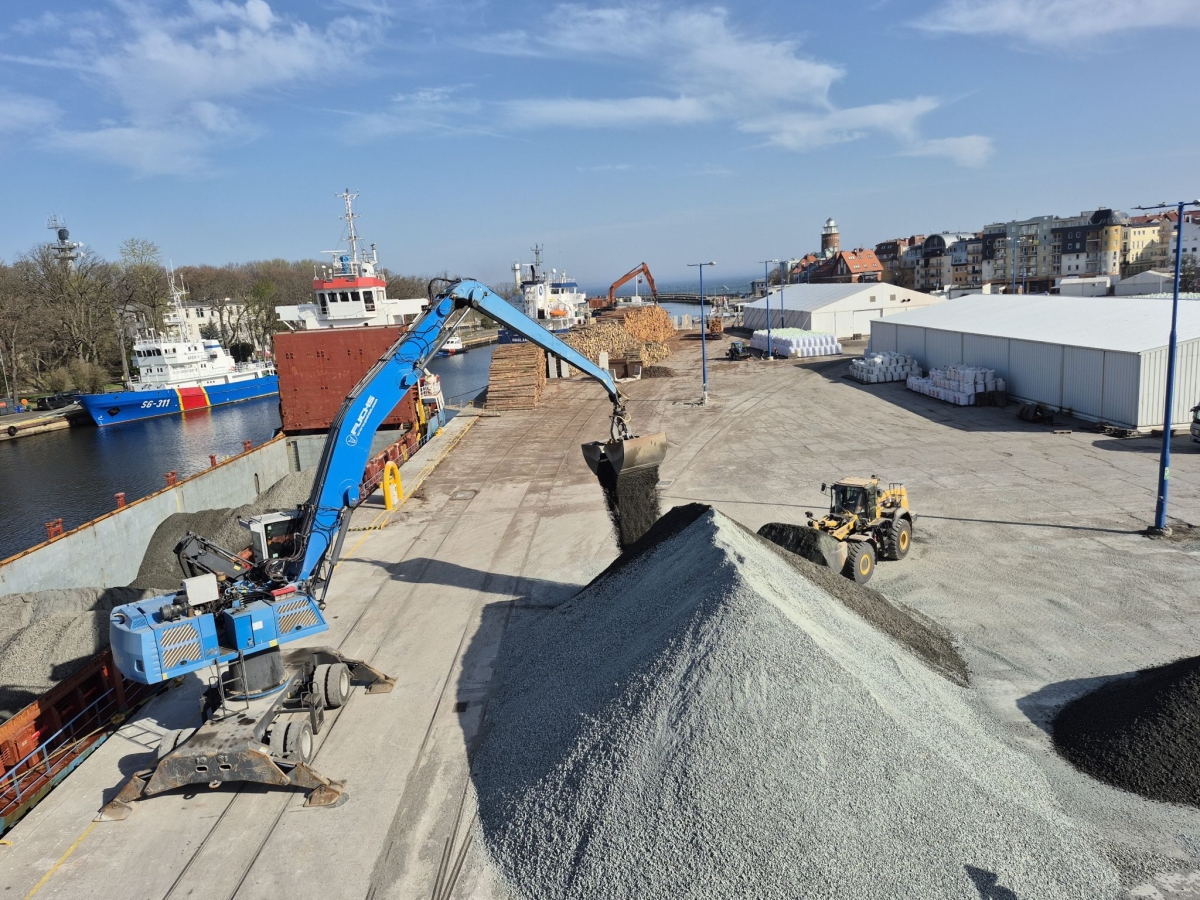
Cargo and material handling operations continue steadily at the Port of Kołobrzeg, and in recent years, they have shown an upward trend. While the figures are not as high as in the ports of Tricity, Szczecin, or Świnoujście, ongoing developments ensure the port plays an important role in the economy of Central Pomerania.
According to the Port of Kołobrzeg Authority, in 2024, the dominant material in handling operations was aggregate, with nearly 73,000 tons handled. It arrives, among other sources, from Norwegian quarries. The aggregate is used in the production of construction materials applied in road infrastructure projects, reinforcing the base of structures such as roadbeds, embankments, overpasses, and bridge abutments.
For instance, material delivered to the port of Kołobrzeg has recently been used in construction works on Aleja I Armii Wojska Polskiego in Kołobrzeg. The city project, which includes the renovation and reconstruction of Aleja I Armii Wojska Polskiego as well as Źródlana and Pomorska streets, is being carried out by DOMAR, a company based in Tatów near Biesiekierz. According to the port authority, the total cost of the investment is PLN 8.5 million, of which nearly PLN 4.6 million comes from the Government Road Development Fund.
In 2023, 277,800 tons of cargo were handled in Kołobrzeg, which marked a significant 63% increase compared to 2022. This result was largely driven by new cargo types, most notably corn from Ukraine. Like the ports in Gdynia, Gdańsk, Szczecin, and Świnoujście, the Port of Kołobrzeg was designated by the Polish government as a transit point for Ukrainian grain, which could not be exported via Ukraine's own Black Sea ports.
A key factor in boosting cargo volumes has been infrastructure investment. As early as 2021, a new rail siding was launched in Kołobrzeg, and over the past five years, storage space has also significantly increased—from 6,000 m² to 10,500 m², a 75% growth.
One of the most important projects planned for 2025 in the port is the deepening of the local port channel. According to the port authority, the goal is to trim the abutment of the Western Breakwater and rebuild access infrastructure to the port and the port channel, which are managed by the Maritime Office in Szczecin. A 250-meter-long quay owned by the Polish Navy is also set for renovation and reconstruction. As a result of these upgrades, the port will be able to accommodate vessels up to 130 meters long, compared to the current limit of 100 meters. In connection with this, a tender for the design documentation was launched in December last year.
Thanks to such investments, the Kołobrzeg Port Authority expects the volume of cargo handled to continue growing in the coming years—and not just for the still-dominant aggregate and timber. Since 2018, when out of the 110,000 tons of goods handled in Kołobrzeg the largest share came from bulk cargo (primarily the two materials mentioned above), there has been a gradual yet clear shift in cargo structure. In 2022, corn was added to the cargo mix, accounting for 41% of total throughput, and in the following year, its share increased to 48%.


